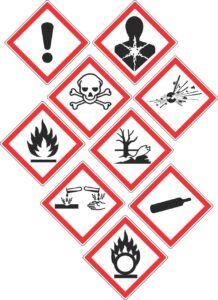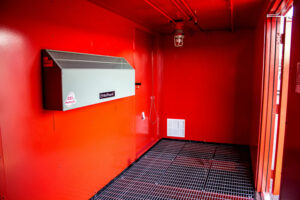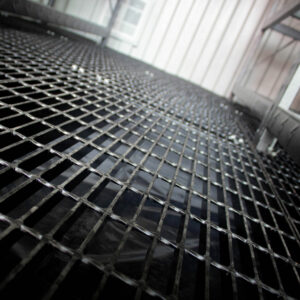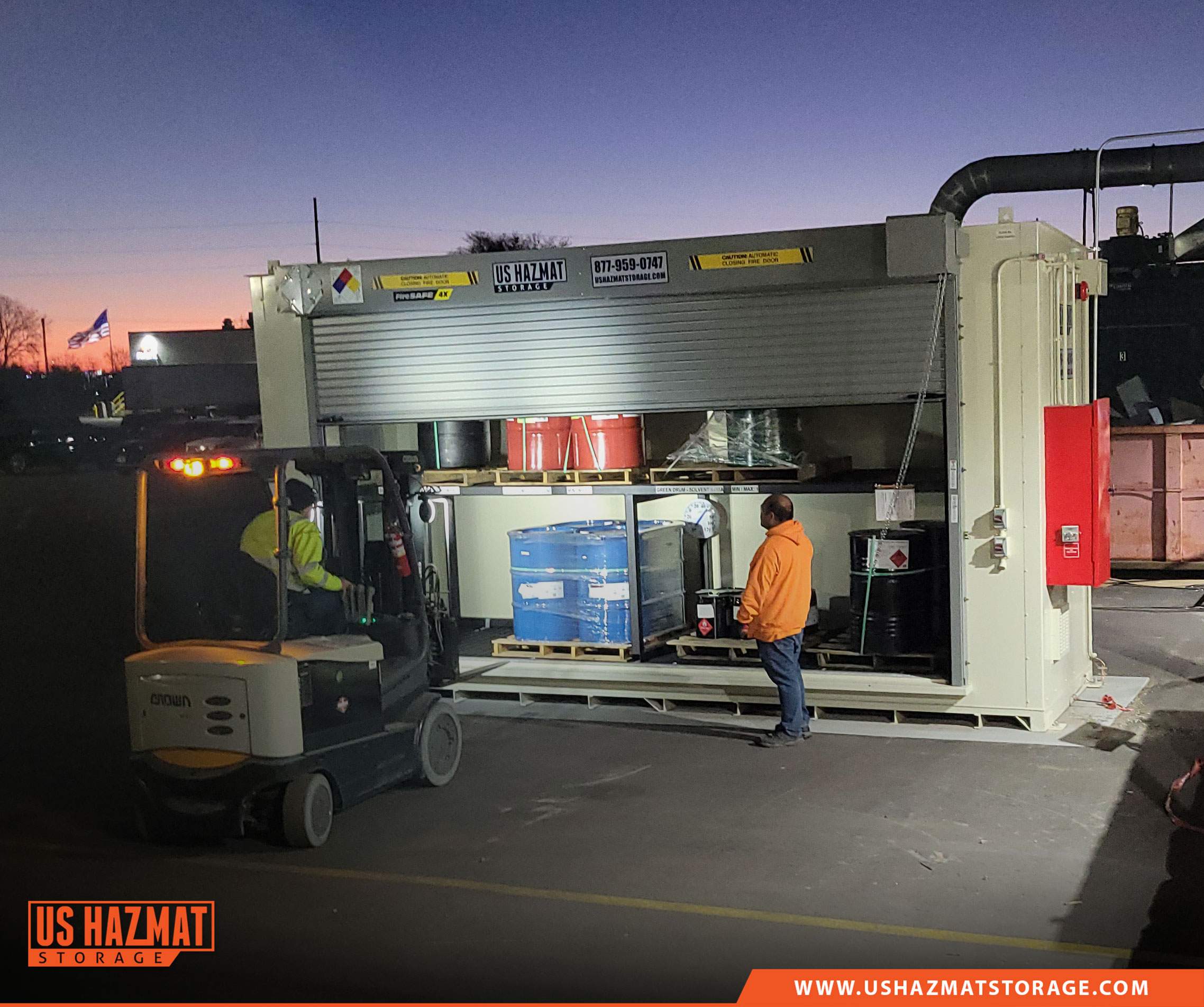Differing chemical classifications necessitate proportional storage and protection. While basic chemical storage practices, such as setbacks, compartmentalization, and spill sump containment, meet most OSHA storage standards, chemicals susceptible to flashovers and sudden conflagrations require closer oversight. Moreover, additional environmental and structural controls better protect more volatile substances. The National Fire Protection Association has delineated High-Hazard Group H-2 occupancy buildings as best suited for storing highly flammable and combustible materials. Failure to store hazardous materials based on hazard classification can result in hefty civil penalties. Our knowledgeable building advisors can determine which chemical storage building best suits your needs.
Hazardous Materials requiring High-Hazard Group H-2 occupancy include:
- Flammable liquids, such as Class I, II, or IIIA liquids
- Combustible dusts
- Flammable gases
- Organic peroxides
- Oxidizers
- Pyrophoric liquids, solids, and gases
- Unstable materials
- Water-reactive materials
What’s the Difference Between High-Hazard Group H-2 and H-3 Chemical Storage?

High-Hazard Group H-2 Buildings are designed for dangerous chemicals that pose deflagration hazards or chemicals with a low flash or melting point. The NFPA classifies High-Hazard Group H-2 substances materials that pose moderate risks to individuals and a less risk to the communities. High-Hazard Group H-3 buildings are designed to store materials and chemicals that carry any physical hazard or pose readily combustion. For readily accessible reference purposes, the International Building Group has developed five specific High-Hazard groups to assist in compliant storage and use of dangerous chemicals depending on their physical properties and burn propensity. While the technical jargon of classifications might sound arbitrary, leading chemical storage experts have developed the High Hazard Group standards to prevent catastrophic harm and product degradation.
What Safety Features Should My Chemical Storage Locker Include?

Hazardous materials’ quantities and physical properties dictate chemical storage buildings’ overall design and safety systems. While every flammable chemical stockpiling exceeding 25 gallons must be kept inside a chemical storage building, the federally required safety features differ invariably. Hazardous materials meeting the H-2 group classification require more stringent protection than H-3 hazards. All H-2 Group Chemicals (see above) require storage in a chemical warehouse that features advanced safety measures and physical controls. These added features include mechanical or passive ventilation, materials segregation, secondary containment, and easily identifiable labeling. While not federally mandated, optional fire suppression adds extra protection. A remote-activated overhead piping system can douse accidental fires, preventing a larger conflagration.
Compliant Chemical Storage for Every Classification, Dilemma

Each customizable U.S. Hazmat chemical storage locker can provide unique physical control for every hazard group. Our talented engineers can design a chemical storage building with optional and federally required safety features for each storage dilemma. Each chemical storage locker is outfitted with an innovative sump containment system. Spilled hazardous materials will pass through the steel grated flooring above the bottom-affixed sump. The hazardous material will remain in the sump until safe extraction. High-Hazard Group 2 buildings can also be outfitted with climate control. While this added feature is not consistently enforced, climate control prevents degradation. We can also outfit High-Hazard Group 2 storage buildings with steel partitions for storage compartmentalization. Moreover, enhanced safety features instill greater confidence within your clientele and workforce. Contact us today for a free quote and consultation!


